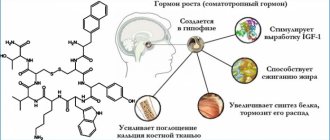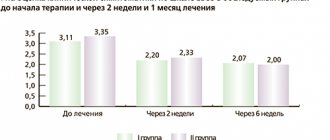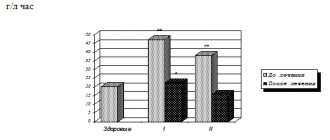Laxatives are one of the most requested drugs in any pharmacy, and all of them are over-the-counter drugs, or OTC drugs, that is, they come to pharmacy visitors directly from the hands of the pharmacist, bypassing the doctor. This places responsibility on the pharmacist who recommends this or that drug. What do you need to know about the problem of constipation in order to select and recommend a drug that is suitable for a particular buyer? Let's figure it out.
CC dossier
Elena Yurievna Shvedkina
endocrinologist, St. Petersburg
What is constipation (obstipatio, constipatio) - long-term (more than 48 hours) retention of feces in the intestines or insufficient, difficult bowel movements, a feeling of incomplete or prolonged evacuation of feces or hard, dry feces. The frequency of bowel movements in healthy people varies widely, from three times a day to three times a week. The World Health Organization classifies constipation as a disease in ICD-10 (code K59.0). Whereas the World Organization of Gastroenterology and the American Gastroenterological Association believe that constipation is not a disease, but a symptom . Leading Russian gastroenterologists share their position.
Most people with constipation never seek medical help, so the prevalence of constipation is difficult to estimate. According to generalized data from population studies, up to 20% of the adult population of developed countries suffers from constipation. Women and older people are more likely to develop constipation.
Constipation can be divided into functional (associated with impaired intestinal dynamics, “ habitual constipation ”) and organic (associated with persistent narrowing of the intestinal lumen and difficulty in passing feces).
The main causes of constipation may be:
- diet (lack of fiber in the diet and insufficient fluid intake);
- sedentary lifestyle;
- diseases of the gastrointestinal tract (peptic ulcer, chronic pancreatitis, dysbiosis, irritable bowel syndrome, colon tumors, strictures, ischemia, volvulus, diverticula, megacolon and dolichosigma);
- diseases of the anus (anal fissures, hemorrhoids, paraproctitis), accompanied by pain and preventing bowel movements;
- neurological diseases (stroke, spinal cord injury, multiple sclerosis, trauma, Parkinson's disease);
- diseases of the endocrine system (hypothyroidism, diabetes mellitus, Addison's disease, pheochromocytoma, etc.);
- taking certain medications (atropine, opiates, antidepressants, NSAIDs, antihistamines, calcium channel blockers and many others);
- depression, anorexia, schizophrenia and other mental illnesses;
- late pregnancy and early postpartum period.
- Risk factors for developing constipation:
- age over 55 years;
- recent surgery on the abdominal or pelvic organs;
- pregnancy;
- restriction of physical activity;
- an inadequate diet can also cause constipation;
- excess body weight;
- taking multiple medications, especially in old age;
- uncontrolled use of laxatives;
- terminal stages of diseases, long comas.
In addition to the fact that constipation is often accompanied by heaviness in the abdomen, flatulence and pain during defecation, prolonged constipation leads to dangerous complications such as intestinal obstruction, colon diverticulosis, rectal prolapse, hemorrhoidal bleeding . A terrible complication of long-term constipation is colon cancer : when the evacuation of intestinal contents is impaired, carcinogenic compounds that damage the mucous membrane are formed. According to the Central Research Institute of Gastroenterology for 2011, the incidence of colorectal cancer in patients suffering from constipation is 4.5%. Constipation itself can often be the first sign of serious neurological (for example, Parkinson's disease), endocrine, gastrointestinal and oncological diseases.
Treatment of constipation primarily comes down to eliminating their causes, normalizing lifestyle and nutrition, physical activity, as well as periodically taking laxatives, but only in cases where other measures are not effective enough!
What are osmotic laxatives
To solve problems with constipation, a large number of medications with different mechanisms of action are currently offered.
Osmotic laxatives effectively cope with problems. The drugs are used for oral administration. Under the influence of drugs, osmotic pressure in the intestine increases. Medicines retain water and help increase the volume of mass contained in the intestines.
Osmotic laxatives are divided into the following groups:
- saline laxatives;
- Macrogol and analogues;
- prebiotics.
They are divided according to different mechanisms of action on the body.
Saline laxatives are represented by different drugs, for example, magnesium sulfate, magnesium hydroxide and others. The drugs are taken orally, are not absorbed, and affect the entire intestine. Thanks to saline laxatives, water from blood plasma and fatty tissues is drawn into the intestines. As a result, the stool softens, and the process of defecation takes place without pain.
Macrogol and similar drugs affect the entire intestine. The most common medications in this group are: Endofalk, Forlax, Fortrans and others. Thanks to these agents, fluid is retained in the intestines. As a result, peristalsis increases, and the problem of constipation is solved.
Etiology of constipation
In the development of physical diseases, social factors play a significant role, including stress, unhealthy lifestyle and nutrition (physical inactivity, lack of ballast substances in the diet, irregular meals, small amount of food, insufficient daily fluid volume, laxative abuse) [9, 10]. Normalizing nutrition and increasing physical activity, as a rule, lead to normalization of intestinal functions. This group includes nutritional, or, as M. Kamm puts it, simple constipation, caused by a deficiency of dietary fiber. In such patients, with the onset of the fruit and vegetable season, the stool usually returns to normal without additional treatment.
Hormonal imbalance during pregnancy, menopause, hypothyroidism, diabetes mellitus, hyperparathyroidism and other diseases also leads to physical dysfunction [11].
Constipation develops when taking certain medications (anticholinergics, opiates, tricyclic antidepressants, neuroleptics, antispasmodics, calcium channel blockers, laxatives, antacids containing aluminum and calcium, iron ions, diuretics, etc.), with cerebral and spinal disorders, depression, multiple sclerosis , dysregulation of the peripheral and enteric nervous systems [1, 11, 12]. Neurogenic constipation develops under the influence of stress (for example, with irritable bowel syndrome), a sudden change in the usual lifestyle or diet (long trips, flights).
When to use osmotic laxatives
Medicines in this group are most often used to solve problems with constipation of varying severity. A positive result is observed even with acute constipation.
Osmotic laxatives are used in the following cases:
- constipation;
- poisoning;
- preparing the patient for various operations and medical examinations.
It must be remembered that constipation that recurs and becomes chronic is a reason to consult a specialist. Gastroenterologists say that constipation is a symptom of a variety of pathologies. First of all, it is necessary to identify the causes of constipation. After eliminating the problem in the body, the symptom – constipation – will go away.
Synthetic laxatives in the treatment of chronic constipation
The rapid urbanization of society, along with numerous advantages, has brought with it a whole bunch of “diseases of civilization,” among which diseases of the digestive system are far from the least important. Most of these diseases are not fatal, but the number of patients suffering from one type of digestive disorder or another is in the tens of millions. Among the various complaints that patients often present to a gastroenterologist, there is one that can be classified as an independent syndrome - impaired bowel movement, in particular constipation. Currently, the problem of chronic constipation is becoming increasingly urgent. Constant stress, the urbanization of our lives and the associated physical inactivity are to blame for this. In highly developed countries, constipation currently affects up to 10% of the adult population, and women experience it three times more often than men. Chronic constipation is diagnosed in approximately 3% of the young population, 8% of the middle-aged population and about 20% of the elderly.
In the introduction to an article on bowel movements in the general population, Heaton et al. O. The topic of normal bowel function is traditionally perceived as a sensitive area, closed for discussion.
For a long time, constipation was defined as prolonged retention of contents in the intestinal tract or delayed bowel movement. There are different points of view on the nature and characteristics of constipation. A number of experts believe that bowel movements should be as regular as urination. Other authors argue that since the colon is a storage reservoir, defecation should occur as fecal matter accumulates in the colon and a reflex urge appears. However, the frequency of bowel movements may be subjectively different. There is not necessarily a correlation between the frequency of bowel movements and the diagnosis of constipation. Aspects such as difficulties with evacuation, hard stools, a feeling of incomplete emptying of the rectum or pain are of great importance.
Data collected by an international research group have been published, according to which a diagnosis of constipation can only be made if the following symptoms are observed for at least 25% of the time during a period of 12 months or more without the use of laxatives:
- defecation requires a certain amount of tension;
- stools are hard or lumpy;
- feeling of incomplete emptying of the rectum;
- bowel movements occur at a frequency of two or fewer times per week.
This purely scientific definition often has little in common with daily medical practice and may not reflect the patient’s subjective feelings. Daily retention of stool due to the morning rush, constant stress at work, and a sedentary lifestyle leads to constant suppression of the act of defecation, the intestines begin to “be lazy,” which inevitably entails the disappearance of the correct reflex.
Constipation is not a disease, but only a sign or symptom. To a certain extent, any form of constipation is a consequence of a pathological condition. It should be borne in mind that with an increase in the well-being of the population, improved nutrition (consumption of refined foods), and a decrease in physical activity and activity, the motor activity of the colon decreases, which inevitably leads to constipation. Neurological (asthenoneurotic conditions) and endocrinological (hypothyroidism) factors, various diseases of the colon and other organs can contribute to the development of intestinal dyskinesia and constipation. There are three forms of constipation:
- disturbances of the tone or motility of the colon or the muscles of the pelvic diaphragm, as well as constipation, the development of which is due to psychological reasons (so-called idiopathic constipation);
- constipation caused by a mechanical obstruction (obstruction);
- drug-induced constipation.
According to Schettler G (Hrsg) 1987, typical causes of constipation are as follows:
- mechanical - weakness of the abdominal muscles;
- gastrointestinal - malabsorption, irritable bowel syndrome, intestinal stenosis, diverticulosis;
- neurogenic - Hirschsprung's disease, spinal cord diseases, Parkinson's disease;
- metabolic-endocrinological - diabetes mellitus, porphyria, hypocalcemia;
- psychogenic - suppression of the urge to defecate;
- medicinal.
The significance in the pathogenesis of constipation of factors such as consumption of fiber in food, intake of sufficient amounts of fluid and physical exercise has not been specifically studied, however, these factors have long been considered fundamental, and correction of their deficiency underlies most treatment methods. Recommendations to increase the intake of fluids and foods with a high fiber content are often associated with changes in habitual eating habits; these measures often turn out to be insufficient or temporary. As a result, patients often begin to take laxatives, either as prescribed by a doctor, or, much more often, on their own initiative.
Available laxatives are divided into separate groups, depending on their mechanisms of action:
- softening feces (liquid paraffin);
- agents that increase the volume of intestinal contents (bran, seeds, synthetic substances);
- laxatives that increase osmotic pressure (non-absorbable salts and polyhydric alcohols);
- lactulose;
- irritant laxatives (anthraquinones and diphenylmethane derivatives);
- drugs that enhance intestinal motor function (prokinetics).
Irritant laxatives are precisely those medications that are particularly abused. These include a number of substances of plant origin, the active principles of which are anthraglycosides (glycosides containing anthraquinone derivatives) - preparations of rhubarb root, buckthorn bark, joster fruit, senna leaves, as well as synthesized substances similar in structure and action to anthraglycosides - phenolphthalein and isafenin (diphenylmethane derivatives).
Thus, for the treatment of constipation, there is a wide range of therapeutic options from which the safest and most effective should be selected.
From this point of view, the group of saline or bulk laxatives looks more promising. Drugs in this group act not only on the large intestine, but also on the small intestine, preventing the absorption of water and, thus, creating a kind of hydrodynamic piston that pushes the semi-liquid mass of intestinal contents out.
An example of such drugs are drugs where the synthetic drug macrogol-4000, based on high-molecular linear chains of polyethylene glycol, is used as a bulk-forming component. Due to its high molecular weight and structural chain features, macrogol-4000 forms hydrogen bonds with water molecules in the intestinal lumen, increasing the osmotic pressure by more than ten times, which allows it to retain a significant amount of liquid around itself. Thus, the liquid content in feces increases, they become softer in consistency, which facilitates the act of defecation. In the process of binding water, polyethylene glycol molecules “swell,” as it were, which is responsible for the additional effect of increasing volume. One macrogol-4000 molecule can bind up to ten water molecules. This only applies to the fraction of water that can be reabsorbed in the colon (9-10 liters per day). Considering the precisely calculated dosage of the drug necessary to achieve a therapeutic effect, this does not lead to dehydration of the body, but only slightly reduces the absorption of water from the colon. Due to its high molecular weight, macrogol-4000 is not absorbed, is not metabolized in the gastrointestinal tract and is not absorbed, which is especially important for diseases associated with metabolic disorders. The absence of electrolytes in the composition of the drug makes it neutral in relation to the acid-base balance of the intestine and does not affect the pH of feces. The laxative effect occurs regardless of the bacterial flora of the intestine, which allows maintaining its normal physiology.
Other laxatives of significant interest in the complex treatment of constipation are preparations based on lactulose, such as Duphalac. The mechanism of action of lactulose-based drugs in patients suffering from constipation has three main components.
- Lactulose (a disaccharide) does not occur in nature, and the human body naturally does not have enzymes capable of hydrolyzing it to the corresponding monosaccharides (galactose and fructose). In this regard, lactulose passes through the gastrointestinal tract and reaches the colon unchanged, almost without being absorbed. Only 0.25-2.0% of the administered drug is absorbed unchanged in the small intestine (possibly through the process of passive diffusion). This percentage may be slightly higher in a number of pathological processes in the intestines - Crohn's disease, celiac enteropathy, as well as with the simultaneous use of hyperosmolar solutions. Reaching the large intestine unchanged, lactulose breaks down into short-chain fatty acids (lactic, acetic, propionic and butyric) during bacterial decomposition. This lowers the pH of the colon contents and stimulates peristalsis.
- The decomposition of lactulose to monosaccharides and then to low molecular weight organic acids known as short chain fatty acids (SCFAs) also increases the osmotic pressure in the intestinal lumen. Dose-dependent acceleration of the movement of colonic contents occurs due to an increase in the volume of chyme, which is caused by water retention within the intestinal lumen and increased intestinal motility.
- Lactulose is a source of energy for saccharolytic bacteria, so it is possible to increase their biomass in the intestine, which was confirmed by studies conducted on healthy volunteers. As a result, it was found that the number of bifidobacteria increases by three orders of magnitude from 109 to 1012, and therefore the drug can be considered not only as a laxative, but also as a prebiotic, restoring the intestinal biocenosis.
By increasing the osmotic pressure in the intestinal lumen by approximately four times, lactulose has a less pronounced osmotic effect than non-absorbable salts. The combination of two moderately potent physiological mechanisms produces a clinical effect comparable to the effects of other laxatives. Since intestinal bacteria metabolize lactulose very quickly, the drug begins to act within a few minutes after the active substance enters the colon. When taking the drug on an empty stomach, the effect can be observed within 1-2 hours.
Lactulose is a source of carbohydrates favorable for lactate-producing bacteria (especially various species of Bifidobacterium and Lactobacillus), which can significantly increase biomass due to it. Ballongue et al demonstrated a marked displacement of proteolytic bacteria (Clostridium and Bacteroides) in vitro by lactulose.
Changes in bacterial metabolism depend on two main factors: firstly, on lactulose itself, which is a rich source of energy and carbohydrates, and secondly, on acidification due to short-chain fatty acids, which are products of bacterial biotransformation.
It is necessary to dwell on the potential uses of lactulose. Today, the fact that intestinal flora and the products of its metabolism can have an extremely strong effect on human health is no longer in dispute. In the presence of lactulose, bifidobacteria are able to especially powerfully inhibit fungi of the genus Candida and statistically significantly reduce the time of bacterial excretion in acute salmonellosis. Also, good results were obtained for infections of the gastrointestinal tract caused by other pathogens: clinically significant improvement was observed in infections caused by Yersinia, as well as in chronic carriers of Shigella.
Lactulose is often confused with lactose, considering that its use is contraindicated in diabetes mellitus. However, the daily dose of lactulose (20 g of powder) contains only about 0.1 XE (bread unit) - this is due to the fact that lactulose is not adsorbed by the body.
A large number of serious studies have been devoted to the use of lactulose in the treatment of portosystemic encephalopathy (PSE), so this issue was not covered in this work.
Thus, advances in the development of organic chemistry, in particular in the field of hydrocarbon synthesis, have made it possible to create synthetic laxatives, which include the drugs described above. They are practically devoid of pronounced side effects, so characteristic of traditional laxatives, especially of herbal origin. It should be noted that many people, especially older people, are prejudiced against “chemistry”, preferring “herbs” or herbal preparations. This article is intended to reveal the capabilities of new tools as fully as possible. In addition, many doctors will find the information presented useful.
in everyday work, since despite the fact that lactulose was synthesized more than 60 years ago (1929), it has not yet received widespread use in medical practice in our country.
Glaxenna is a mild, effective laxative of plant origin (a complex of anthraglycosides from the leaves of senna (cassia) acufolia and angustifolia). The laxative effect is due to the effect on the receptors of the intestinal mucosa and a reflex increase in peristalsis, which leads to faster bowel movements and restoration of the normal functioning of the gastrointestinal tract.
Indications for the use of Glaxenna are constipation caused by hypotension and atony of the gastrointestinal tract, sluggish peristalsis of the colon, including after surgery and childbirth. The use of glacenna helps regulate stool in cases of hemorrhoids, proctitis, and anal fissures. It is possible to use the drug during preparation for x-ray and ultrasound examinations and surgical operations.
Glaxenna is usually taken once a day in the evening before bed, the effect occurs 6-12 hours after taking one or two tablets.
M. V. Belyaev , Candidate of Medical Sciences Civil Aviation Hospital, Moscow
List of drugs
Pharmacological enterprises produce three types of osmotic drugs that have a laxative effect on the body. Pharmacies offer a large number of such drugs.
Table “Osmotic laxatives”:
| group | Name | properties | contraindications | by-effect |
| salt preparations |
|
|
|
|
| prebiotics |
|
| allergic reaction; | flatulence; |
| Macrogol and its analogues |
|
| hypersensitivity to the substances included in the composition; |
|
It is recommended to consult a doctor before starting to take medications.
Literature:
- Minushkin O.N. Functional constipation: dynamics of ideas, diagnosis, some therapeutic approaches. Medical advice. 2017; 20:92-95
- Turchina M.S. The use of complex laxatives in the treatment of chronic constipation. Medical advice. 2017; 5:77-79
- Minushkin O.N. Chronic constipation (definition, epidemiology, diagnosis): modern drug therapy. Medical advice. 2015; 13: 100-105
- Plotnikova E.Yu., Krasnov K.A. Constipation needs to be treated. Medical advice. 2018; 14:61-66
- Stepanov Yu.M., Vlasova O.N. et al. Negative effects of laxative abuse in medical practice. Gastroenterology. 2018; 52 (3): 168-173
- Luzina E.V. Safety of using laxatives. Russian medical journal. 2014; 5:41-44
- Parfenov A.I. Three options for the pathogenesis and treatment of chronic constipation. Gastroenterology. 2012; 3:7-19
- Plotnikova E.Yu. Modern ideas about constipation. Attending doctor. 08/2015
- Pharmacology of drugs affecting the function of the digestive organs: textbook by A.N. Leventa, L.B. Kuklina, S.G. Alexandrov, N.V. Verlan, L.O. Gutsol, I.Zh. Seminsky, O.V. Shabaturova; GBOU VPO IGMU of the Ministry of Health of Russia - Irkutsk, 2013. -112 pp. 102-103
- Global practical recommendations of the World Gastroenterological Organization. Probiotics and prebiotics. 2021 — 37 p.
- Instructions for use of MICROLAX® microenemas. // Reg. number P N011146/01 // GRLS of the Russian Federation. – URL: https://grls.rosminzdrav.ru/Grls_View_v2.aspx?routingGuid=f052fb31-5426-4bc1-958f-9fce793aa43f&t= (date accessed 05/05/2010).
- Erdes S.I., Matsukatova B.O. and others. Episodic and chronic constipation in children: a step-by-step approach to therapy within the framework of the IV Rome criteria. Pediatrics. Consilium Medicum. 2019; 1:71-76
- Constipation in young children: causes and features of dietary correction O.N. Komarova, A.I. Khavkin (Questions of modern pediatrics. 2014; 13 (1): 114–118
- Clinical recommendations. Constipation in adults (as a manifestation of systemic diseases). Scientific Society of Gastroenterologists of Russia (NOGR), Russian Scientific Medical Society of Therapists (RNSOT) - 2019
- Lactulose: arguments and facts. Yu.O. Shulpekova. EFFECTIVE PHARMACOTHERAPY. Gastroenterology. 5/2011 - pp. 28-71.
- Clinical guidelines: Constipation / Russian Gastroenterological Association. Association of Coloproctologists of Russia - 2021.
- Minushkin O.N. 1, Elizavetina G.A. Forlax in the treatment of chronic constipation: features of therapy for elderly patients / “Breast Cancer” No. 1 - 2006.
Up to contents
Watch in our video which laxative to choose for constipation: tablets, syrup or microenemas
Stimulants
Stimulant laxatives have an irritating effect on the intestinal walls, causing them to contract and move feces towards the exit. The preparations may contain synthetic and natural components, for example, buckthorn or senna.
The only advantage of symptomatic stimulants is a quick, reliable effect. Experts allow taking such drugs once if it is necessary to cleanse the intestines in a short time. Indications for use:
- instrumental studies - for example, colonoscopy,
- preparation for anorectal surgery,
- isolated case of prolonged stool retention.
Senna and other components in stimulant laxatives act aggressively: they damage the epithelium of the intestinal walls and impair motility. When taken for a long time, they are addictive, so you cannot use them constantly.
Antidepressants and antipsychotics
Constipation from antidepressants occurs quite often, forcing dose adjustments or changes in treatment regimen. Monoamine oxidase inhibitors, or MAOIs, are a group of antidepressants that can relax the smooth muscle of the intestines and increase the time it takes for contents to move through the intestines. This side effect also occurs when taking tricyclic antidepressants, and quite often.
Among antipsychotics, phenothiazines have significant side effects. They can block receptors for certain neurotransmitters, histamine, leading to constipation. There are known cases of colon distension, accompanied by severe constipation.
Painkillers
Many doctors classify drugs that cause constipation as opiates. These are prescription, narcotic analgesics with multiple mechanisms of action. They affect the intestinal receptor apparatus, nerve endings, cells of the mucous membrane and muscles. This weakens peristaltic activity, delays gastric emptying, increases water absorption, which makes the stool dry and dense and impedes the movement of intestinal contents.
It should be remembered that opioids act both systemically and locally, and the side effects develop quickly and are dose dependent. Another mechanism is suppression of the urge to defecate.
But some researchers insist that constipation can be caused not only by narcotic drugs, but also by non-steroidal anti-inflammatory drugs - painkillers, which we often take without a doctor’s prescription to relieve certain symptoms. For example, Doctor of Medical Sciences Parfenov A.I. classifies all “analgesics: opiates, tramadol, NSAIDs” as drugs that cause medicinal constipation (Parfenov A.I., 2011, p. 13).
Over-the-counter pain relievers or NSAIDs can increase stomach acid production, alter mucus production, and relax the smooth muscle of the gastrointestinal tract.









